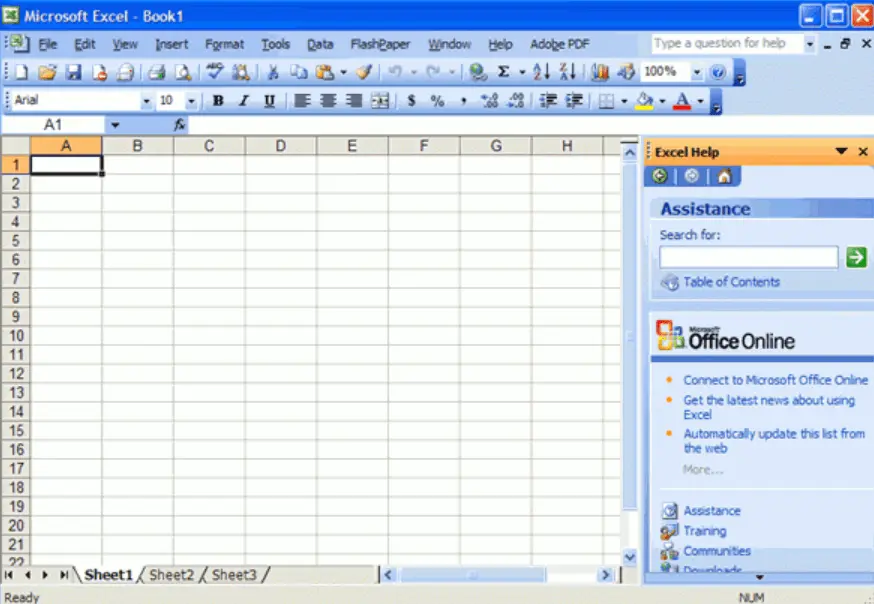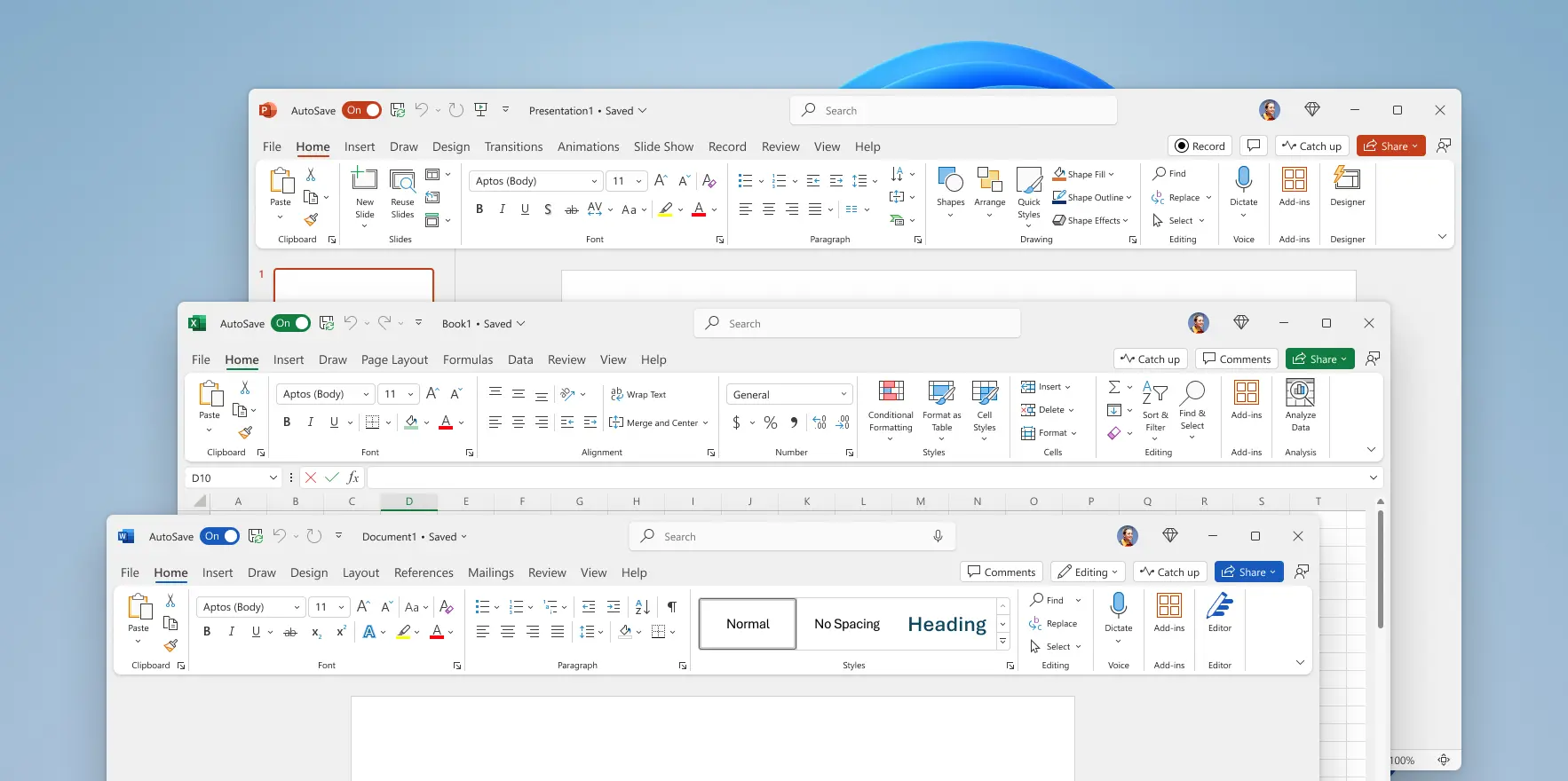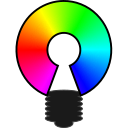Why did UI’s turn from practical to form over function?
E.g. Office 2003 vs Microsoft 365

It’s easy to remember where everything is with a toolbar and menu bar, which allows access to any option in one click and hold move.

Seriously? Big ribbon and massive padding wasting space, as well as the ribbon being clunky to use.
Why did this happen?
I would like to see them add something like the VSCode command pallette. That way if I know the name of the tool but can’t remember or don’t want to go click for it, I just just type the name and fuzzy find it.
Doesn’t office already have a very powerful search bar?
The Ribbon is much better, and has been a part of the Office suite for over a decade, easily.
Poor examples aside, designers and engineers are rarely given a seat at the table in big tech companies. Most tech CEO’s were either tech managers or sales people at some point, and are so far removed from IC work or valuing specific crafts for their user value that someone on the UX side probably doesn’t get a say in how this shit is built.
Some UX designers either work to very specific business constraints, or work on stuff that has zero benefit to the end-user. Some engineers work on stuff that solely provides metrics for shareholders and leadership.
I’m tempted to set up a blog just to post about this subject, because it’s everywhere, but big tech is now so top-heavy that for years many huge decisions have been made on a whim by execs. Tech has grown so large and powerful that tech execs (and those clinging to their coat-tails) put themselves outside of the echelons of what an IC can reach, and far above the user. Years of MBA double-speak and worshipping the altar of guys like Gates, Bezos, and Jobs means that it’s “good” to be opinionated and ignore fact over your own judgement. This results in senior management deciding “let’s put AI here” or “the colour scheme should be mostly white”, despite reluctantly paying hundreds of people many thousands of dollars a year to KNOW about this stuff.
That, in essence, is why everything feels shitter nowadays. It’s because some fifty-something MBA cunt believes that you need AI, or a good UI needs more buttons - stuff we’ve known for decades is fucking stupid. That’s irrelevant though, because by being “General Manager of UI at MegaCorp” and having an assistant to arrange their Outlook calendar, they know more than you, pleb.
Why did this happen?
The cynical but probably truer than we’d like to admit answer is “middle managers who bring nothing to the table but need to ‘make big changes’ to justify that promotion they’ve been chasing.”
Source: Pretty much all corporations at this point have these people, my sister’s ex-husband is one at Google.
This is so true of so many companies nowadays. The fact of the matter is that the big leaps in profit/efficiency/effectivness have basically all happened in most of these industries and so often people are pressed to make these sweeping changes because there isn’t any real way to improve on a system like this.
Reading Ed Zitron’s coverage of the Google antitrust cases is pretty eye opening.
Mostly because it says basically what you just said: we’ve already reached pretty much peak efficiency in these forms, and since they can’t bleed out more money via “efficiency” they’re now leaning towards “How many customers can I piss off while increasing ad interactions by 1%?” As Zitron points out, they’re literally chasing tiny percentage points of growth through “how many people can we piss off and still grow?” instead of offering anything new and useful. It’s just “we’re entrenched, so why would we try anything risky at all ever?” all the way down.
Corpos are down voting you because their butts hurt. You are right.
I love Ed. He is a fantastic writer.
Change for the sake of change is so dumb. I’m tired of pointless UI changes every so many years because some middle manager and their designers need to wow some dumb exec to get a promotion and they do so just by rearranging all the existing functionality because the product itself is already a complete solution that doesn’t actually need a new version. Sadly, this mentality even creeps into FOSS spaces. Canonical and Ubuntu wanting to reinvent the wheel with Unity, Mir, Snap, etc. GNOME radically changing their UI all the time.
Gnome does not radically change their design all the time.
The last time they did that was Gnome 3, which came out 13 years ago.
And you may think it was change for the sake of change, but I’d disagree. The workflow is amazing. Using anything else just feels clunky to me now.
The changes made in Gnome were based on UX usability studies, not just changing shit for the sake of changing it.
You’re mistaking your dislike of Gnome not operating like a traditional windows-like UX for it being objectively bad.
To be fair to the Open Source community, Canonical is a private company, and so it’s not really a shocker that they keep promoting bullshit tied to their own ecosystem. Especially with someone like Mark Shuttleworth involved, he was one of the early rich out of touch space tourists, long before Bezos looked like an idiot coming back from space. The profit motive always infects everything it touches.
Complete side note, I saw your pfp and checked your profile to confirm my suspicions. Thank you for your work on OpenRGB! It’s been a great tool for managing the LEDs on my computer.
Honestly I like ribbons quite a lot as a design framework and hell, even padding can improve the UX, it’s just a shame that neither of these elements have been used well in a decade.
Agreed. I’m sure if I was heads down in Excel for years beforehand it would be a significant downgrade, but as a casual user, making better use of some of the more advanced features became so, SO much easier with the Ribbon.
The old file menu was way more functional if you needed to be keyboard only.
In a world that loves to tout “efficiency” sprawling GUIs and mouse-click-everything has drastically reduced efficiency when a keyboard + shortcuts + macros are far more efficient.
The further we stray from the CLI the further we stray from God. CLI-nliness is next to Godliness.
Look to the atheist. He does not use the command line because he secretly believes. He does so because he knows it’s good.
I’d like to use good GUI programs designed for using with a keyboard, but it seems touch UI is the main theme for bigger developers these days, and keyboard is an afterthought at best
What makes it even worse is that screens got wider and shorter, but the new designs use more vertical space than before, leaving even less height to do anything in.
16:9 was pushed on us because it was cheaper to produce on mass for tv and pc. 16:9 was better for movies.
There are some monitors from just before this massive market manipulation and those have 16:10, sometimes with display port before hdmi was even mainstream.
Apple is actually one of the few companies to make the jump from 4:3 to 16:10 avoiding the 16:9 with very few exceptions.
To this day i see people work with old software designed for the area of more vertical screens but doing so on screens designed for movies.
Most people dont even understand what i mean when i explain this. But the good thing is my issue with it was considered a disability so they had to accommodate me with something more sensible.
Sorry long comments but this is a personal vice for me.
I swear I still get letterboxes on a 16:9 television watching at least some movies. And of course I get pillarboxes for days watching “fullscreen” pan & scan DVDs or anything shot for TV before 2010.
16:10 is a pretty good laptop aspect ratio, but on the desktop I don’t think I’m giving up my 21:9 monitor. For gaming it’s simply majestic and having enough real estate for CAD and a spreadsheet open side by side and actually get stuff done is something I won’t give up.
Actually i have and love my 21:9, but it was a weird journey.
The most common resolution for them is 3440x1440 21:9
At work i use a 2560x1600 16:10
You may see my problem, i was not going to give up those 160 vertical pixels. So i got a 3840x1600 instead…
Which comes down to the same 21:9…
I think the reason its not a problem is cause how rarely your only using a single fullscreen window on such ultrawides.
Majestic for gaming ind… and the gpu caught fire again.
Ha, but the presence of vertical monitors means we can do this , amirite? We’re just better using the screen space people have …. Who have spent hundreds of dollars extra on extra hardware to make this shitty ui usable
My $300 32 inch IPS 16:9 monitor laughs hard at my old $2000 19 inch 4:3 CRT.
If you are on a desktop, it’s insane how both cheap and good monitors have become.
Still I absolutely agree, wasting vertical space is more annoying than horizontal.
UI designer here - people are simply getting dumber, tech-wise at least.
That being said, there have been a lot of improvements in UI and UX world in the past 20 years the problem is that many users are so technically inept the drag down the entire curve all the way down.
I feel like I belong to one of the last generations that had to figure stuff out on our own when it came to computers back when I was a kid.
I was born in 87, my first computer ran Windows 3.11, I remember installing Windows 95 from floppy disks.
The whole “it just works” part of tech is both fantastic and horrible, fantastic in that it works, horrible in that when it doesn’t you get way fewer tools to work with.
Think I kinda agree with this. Yesteryear’s software took training and experience, and business either hired or trained that experience. Now businesses don’t want to waste time or money on training, so thy hire experience, contract it out, or find some kit that is “easy” with minimal learning curve.
The decline is all around us.
Apparently, now wifi is synonymous with internet service.
Weirdly as someone who has used both styles heavily, I’d say the ribbon is more practical than the old toolbars. That’s more contextual grouping and more functional given the tabs and search, plus the modern flat design is less distracting, which is what I’d want from a productivity application. Also for me two rows of toolbars & a menu is about the same height as the ribbon anyway, and you can collapse the ribbon if you want to use the space
Yeah, does anyone else remember the menu bars that would show up and disappear depending on what you were doing? Those were awful–the ribbon method of context-specific tabs is better (IMO).
I remember people being upset by the ribbon back when office 2007 was released. Their complaints made sense until I sat down and used it. Found it to be a great improvement. I switched my libre office to the ribbon layout as soon as they added it. Because I don’t use it often, the it’s great for finding stuff compared to looking through the menus.
The nice thing about the LO implementation is also that they added a couple of varieties of the design, like the compact one which pushes things closer together so it’s not distracting.
It’s like having a robot vacuum. You’ll catch yourself saying “Why is it ALWAYS getting in my way??!” It’s not, it’s just that you only think about where it is when it’s in your way. When it’s not around you, you are thinking about other things.
UI is the same. People complain about any UI they actually stop to notice. If you know the UI well you don’t even really think about it, you just use it. When a UI changes you have to relearn a little bit and this causes people to have to stop and think about the UI.
99.99% of the time people seem to interpret this as “This UI objectively sucks! Any UI I need to think about must be terrible!”
But it’s not that hard to understand that a little relearning will follow change, and that things will have to change over time unless they were perfect forever out of the box, which nothing is.
But no. “The new update is horrible!” Every. Time. It’s so routine to UI designers that they totally ignore this feedback. So people really shouldn’t even bother to post it.
Flat design may be less distracting to you but that also means it’s less clear, because there are fewer obvious demarcation.
I despise flat design, it’s downright awful design, and done for looks rather than functionality.
Even saying it’s “less distractive” supports this.
Microsoft also did this to obfuscate features, which is pretty apparent when you consider new users used to “discover” features via the menu system. I supported Office for MS in the early days, and this was a huge thing at the time. It was discussed heavily when training on new versions.
How many UI/UX usability studies have you done yourself. Links to results.
Since when is it not okay to have an opinion on how you’d like your computer to work? You’re saying it as if usability was an objective truth, not a preference of majority of users. People are different, everyone is talking about neurodiversity, and you’re saying that loving lowest common denominator UIs are the only acceptable opinion in the light of objective facts.
Microsoft also did this to obfuscate features
lol
Flat design may be less distracting to you but that also means it’s less clear, because there are fewer obvious demarcation.
I despise flat design, it’s downright awful design, and done for looks rather than functionality.
to you
Flat design dominates for a reason—the less visually busy something is, the easier it is for users to wrap their heads around it. This gets proven again and again in user studies, the more busy and dense you make things, the more users miss stuff and get lost.
People’s opinions on the ribbon specifically are obviously all subjective, but I would say the less distracting design would be the one done less for looks, rather it’s a pretty utilitarian design if you pick it apart. This is an interface for productivity tools, and as such the interface should get out of your way until you need it—the ribbon just does that better IMO.
Microsoft also did this to obfuscate features, which is pretty apparent when you consider new users used to “discover” features via the menu system. I supported Office for MS in the early days, and this was a huge thing at the time. It was discussed heavily when training on new versions.
Why on earth would Microsoft want to obfuscate features? There’s no way that motivation would ever make sense.
IIRC one of the main reasons Microsoft introduced the ribbon was that grouping functionality contextually helped users discover features, because people kept requesting features that already existed, but they just couldn’t find. I remember there being a blog on the Microsoft developer site about the making of it that went into this.
All that usability testing that Microsoft did is a big part of the problem. Instead of the functionality of functionality being organized under menus by function ….
They made “typical” functions more accessible to “typical” users, but I’m not typical; most people don’t match that average profile. Anyone who uses Office at all frequently are not average users. Anyone who frequently needs a particular functionality are not average users
Instead of being organized under menus by name, it’s now organized under ribbon tabs by icon, visual grouping, and sometimes also name. It’s no less organized lol
Granted the icons are getting better over time, but all too often I’m still looking for the name to figure out what that mysterious icon is. Now I need to adjust the screen size so more names appear so I can figure out what to click. Wouldn’t it be nice if the names were all visible at a click, organized hierarchically?
Why wait for a click? Each ribbon tab has submenus with their contents already visible (no necessary click --> hover/click --> hover in submenu without letting your mouse leave for even 1 pixel) and the state of each option represented in whatever way is most convenient (button, toggle, dropdown, etc.). A menu doesn’t show all options in one category at once, doesn’t fully show their state, and closes itself every time you mess up a mouse movement if it’s programmed badly. The lack of names can be bad, but the learning curve for identifying options (hovering and seeing the name) isn’t worse than it is for finding options in a menu (searching every menu until you find the right option).
Isn’t there a way to just his the ribbon?
I kinda remember those conversations, wasn’t there an issue back then that Microsoft had a patent on the ribbon ?
Wow, I still use paint.net. My needs are pretty humble, and it still hits that sweet spot between MS Paint and Gimp.
Yeah, I still use it too, almost weekly.
I’ve sort of been forced over to Mac (not that it’s a bad thing, just a thing), and Paint.NET is perhaps my biggest loss in that transition. I’ve loved that program since its early days, and is always one of my first installs on any new Windows installation.
Yeah, I’ve been trying to make a switch over to Linux for a lot of reasons, but honestly Paint.NET is the one thing that keeps me tethered to Windows that I’m not super grumpy about (Adobe also keeps me tethered to Windows, but that makes me angry every time I think about it).
If *Nix has a decent image editor with layers that isn’t super over-engineered like GIMP is, I haven’t heard of it yet. Maybe that’s all become web-based.
The ribbon is better than menus. They’re even customizable. And lots of non-Microsoft software uses ribbons, too.
Plus there’s a search function right at the top if you can’t find the option you’re looking for
Yet the menus had a search option and were fully customizable … and didn’t waste so much screen space.
As a user, I’ve never once thought: “I wish I couldn’t fit so many windows on my screen”, nor “I wish non-working space takes up most of my screen forcing me to buy bigger monitors”
I have all the stuff I use regularly on the first ribbon. I also run excel with the formula bar 3-lines tall. Common keyboard shortcuts were removed so there’s very little unused clutter
At work I use a 1920x1200 display and have never once thought “ugh I wish I could see 4 more rows” - but if I did, I’d just collapse the ribbon…
I remember when much lower resolution was useful, now that’s a small size. Maybe a core problem is the number of people who maximize a window (see, look how much room there is), rather than trying to have multiple Windows to work together
I think it’s more of an evolution in the way we use computers than a problem. The original Office UI was made during a time of single monitor dominance and now dual monitors is the standard for companies.
My most-used applications for work at AutoCAD and Excel and it’s very rare I DON’T have them maximized. They both have ribbons but even if they didn’t, I can’t imagine using them in a small window. Really the only program I don’t run full screen is Notepad
Sure auto card is a great example where you might want to maximize a window to make it more useable. Although wouldn’t it be nice if there were small widgets somewhere out of the way for functions like texting or email? I have no idea what the autocad ui is like, but you’d bet I’d be frustrated if some stupid ribbon was taking up valuable screen space, especially the all important vertical space
You can use OpenOffice which hasn’t adopted any new UI since 1998.
Yeaaah, don’t use open office, it hasn’t had any code updates in like 15 years. Use and suggest libre office instead.
Except that OpenOffice has been forked into LibreOffice in like 2010 and has since gotten an optional ribbon UI.
The Ribbon isn’t the worst thing. It tried to solve the clutter of the previous interface, although I always preferred the old one.
Here is an interesting take on the problem of modern interfaces: https://datagubbe.se/decusab/
I prefer the ribbon. It makes everything easier to discover and use.
It’s also entirely configurable so i was able to tailor it specifically to my needs, even include button for my macro, logically grouped and not thrown together with no heads or tail in a “macro” submenu.
It also allows widgets with much richer informational content than menus.
The ribbon is also entirely keyboard navigable with visual hints. Which means you can use anything mouse free without having to remember rarely used shortcuts.
And if the ribbon takes too much space, and you can’t afford a better screen, you can hide and show it with ctrl-F1 or a click somewhere (probably).
It’s actually a much much better UX than menus and submenus and everything hidden and zero adaptability. At least for tools like the office apps with a bazillion functions.
Most copies of the ribbon are utter shit though because the people who copied didn’t understand the strength of the office ribbon and only copied the looks superficially.
It’s funny to see people still hung up on the ribbon 17 years later.
It’s because of people like you that we still use qwerty on row staggered keyboards from the mechanical typewriter era.
I’ll just straight up say that the problem is with Microsoft more than anything else. Their UI design is abysmal. Nothing is consistent, nothing is smoothly animated, nothing is easily identifiable by its icon, nothing is glassy and good looking like Win7/macOS. Even in their peak design of Windows 7, they still had those awful legacy UI elements in system settings and the registry settings.
Even with multitouch trackpads being a thing on Windows now, there’s STILL not linear trackpad gestures as of 6 months ago when I played with the display units in the store.
I am an IT technician working in Microsoft 365 / Azure, Microsoft makes changes so often that their own documentation hasn’t even been updated with the proper new name of the product in the product’s own documentation, oh and the name change took place several months if not a year ago.
It seems easier to find things for users. Probably part of dumbing things down.
My mom went through this last week with Libre Office. She said she couldn’t find anything because the ribbons from Word weren’t there. I found the option and enabled it and she said that was much better.
Whereas, I use Word 365 on a daily basis but I still know where things are from the classic menus.
But users want big pictures and less words, less menus.
So UI designers have done that.
You see that in the change between Windows 7 and Windows 8 in heavy ways. More buttons and less menus.
I fucking hate the dumbing down, especially on servers.
What’s dumber about visual grouping instead of menus? Functionality is more grouped and readily visible in a visual menu? Being clear, intuitive, or more readable is not “dumb” lmao. It may require more knowledge to use a textual menu, but that doesn’t make it smart-- in fact, it’s a pretty dumb design.
I swear some people want computers to be more adversarial and difficult to use because it makes them feel smarter for being a tech enthusiast or something
Thankfully, the normies are moving away from computer and maybe the ecosystem will heal in our lifetimes 🤞
We can only hope. Unfortunately phones were headed that way too, but we seem to have maxed out how big a phone people are willing to carry. I dread the idea of folding phone screens, because people will use the same excuses to take up more and more space for fancier UIs (and ads), while decreasing usable screen space to push us into folding phones.
I’m sure it’ll be just like the guy above justifying wasteful UI because of “bigger screens”. No, the other way around: bigger screens became necessary because of wasteful UI.
Yeah, phones are a lost case.














